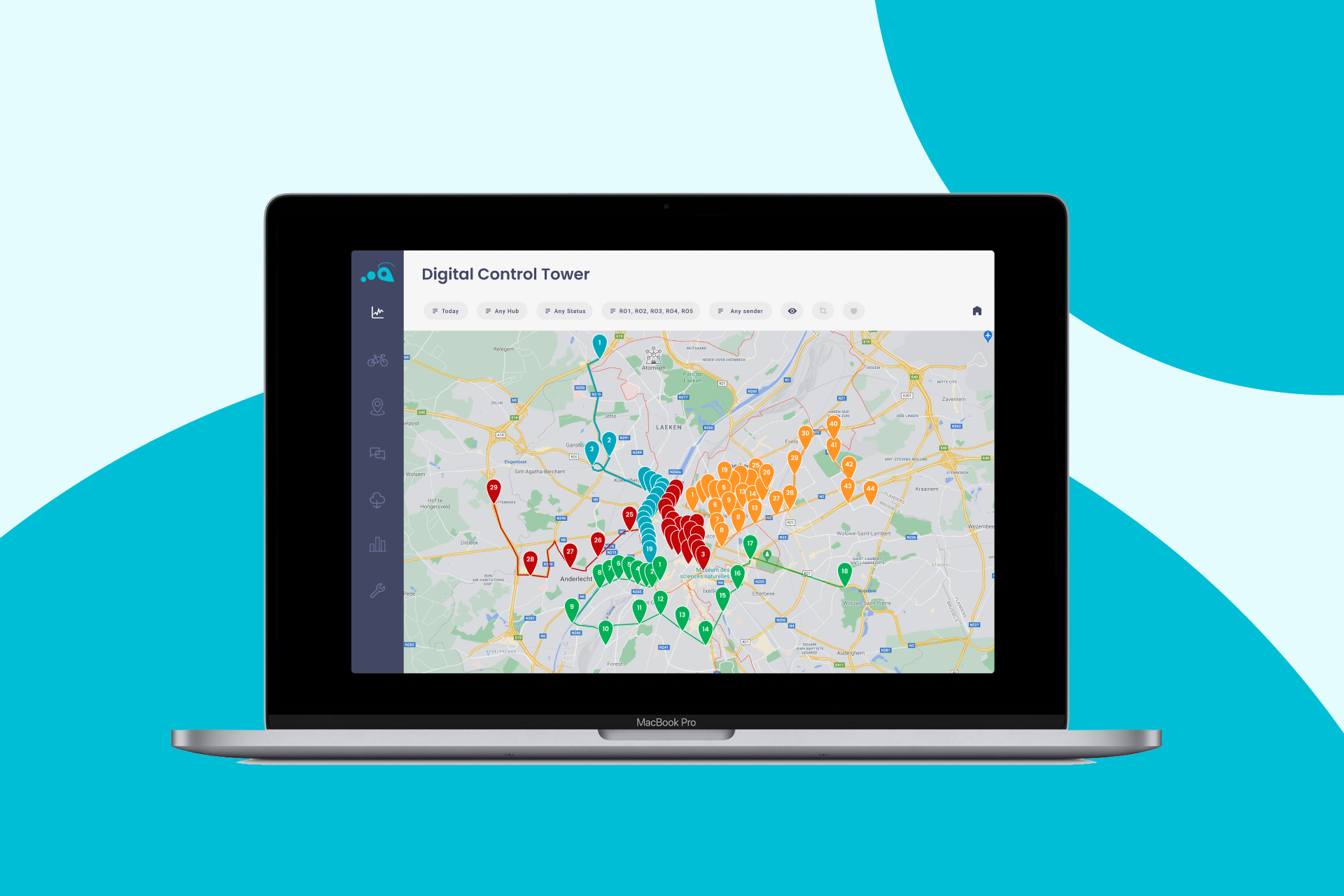

It’s 2025. Your business is flourishing after several years of economic downturn. Demand is up, which means deliveries are up.
It’s your job to figure out how to scale your delivery operation to cope with increasing orders. Perhaps you cobbled together a solution during the pandemic with duct tape and a couple of emergency carriers. But now you need something proper. You need last mile software.
But where to begin?
We’ve put together this handy run-down of all the things you need to account for in your last mile delivery solution. Brought to you by a group of last mile experts who have been building solutions for the industry for many years and know inside out which pitfalls to avoid, especially for scaling businesses.
Why managing expansion is so important
Controlling and managing your expanding operations has never been more important.
Demand for last mile delivery increasing year-on-year due to changing consumer behaviours. You know the score – they’re no longer satisfied with a 2- or 3-day delivery window, they want it next day or even within the hour! And if they receive a poor experience, then guess who’s held accountable for that too?
Then there’s the other burgeoning part of ‘brand experience’ to take into account now as well – sustainability. Sustainable operations aren’t just part of a company’s social responsibility to the planet, they’re also featuring more and more in how customers evaluate brands, as this recent IBM study showed.
To keep up with these ever-changing demands, businesses are turning to dedicated delivery management solutions, and rightly so, as these solutions help manage end-to-end operations and give increased visibility into the full delivery supply chain.
READ MORE: How to boost ROI from your last mile software during a downturn
The key with any solution, however, is making sure you select the right one for your business. Luckily, there’s a new breed of last mile delivery software solutions now available that are feature-rich and fully ‘end-to-end’, meaning that they not only enable you to adopt new and innovative delivery mechanisms, but they also help you to improve customer satisfaction and even reduce fuel usage.
When it comes to evaluating these software solutions, we’ve put together the 4 key areas you need to consider for your scaling business:
- Optimisation and automation
- Carrier, fleet and driver management
- Sustainable operations
- Customer experience
Last mile software for optimisation and automation
It goes without saying that route optimisation is a critical part of any delivery operation, as it involves calculating the best routes and assigning the right drivers, both of which greatly contribute to your delivery efficiencies and drop density.
Many last mile delivery solutions will optimise for a single factor, which is great if you’re a small company just starting out or focusing on one geography. However, as you scale, you’ll want a much more comprehensive approach with software that optimises across multiple factors, even giving each factor a different weighting based on your specific business needs and processes.
The best software solutions will include what’s known as smart optimisation across both your routes and fleets. These typically include algorithms based on both historical traffic data and specific vehicle characteristics, plus any additional rules you want to configure manually, for example, if you need to prioritise the use of electric vehicles in low emission zones. This last point is pretty crucial for scaling businesses and operations and it’s something you’ll want to ask of your software supplier – are the algorithms configured to expand to larger data sets when required? If they aren’t, then they won’t support your expanding operations!
One of the most important things you’ll want included as part and parcel of your optimisation features is an easy-to-use visual dashboard, typically including the following capabilities:
- View routes / rounds assigned to your drivers.
- View individual jobs making up each route.
- Filter on each route with easy-to-see flags for route problems.
- Colour coding to represent wait times, number of items and any unplanned events that occur in the field.
- Real-time data synching.
- Map view for a complete, bird’s eye picture.
- Drag and drop to move jobs between routes and make changes on the go.
Last mile delivery is one of the most complex operations a company can manage, so it makes sense that the software solution you deploy can not only match that complexity but go towards simplifying it too. The ability to plan the ideal route, assign the best drivers, and see all of your operations from one easy dashboard are therefore criteria that should feature at the top of your assessment criteria list!
NEXT UP: How can last mile software help me increase the drop density of my deliveries?
Carrier, fleet and driver management
It naturally follows that any software solution designed to help you expand your operations is going to support you with your carrier, fleet AND driver management, especially as these functions scale exponentially.
Smart optimisation that we mentioned earlier comes into play again here as you’ll want to check that the rules you can assign also extend to external partners. In fact, you’ll even want to verify that you can give software or platform access to third parties. At the very least and for some of your larger 3PL, the software should be able to send tasks via API.
Talking of APIs, this is an area you’ll need to spend a bit of time on getting right and listing out all of the different integrations you’ll need your software to handle. Be sure to ask about carrier integrations. Are you able to add the carriers you already use into the solution even if they don’t use it themselves? How long will it take to get them onboarded? Days, weeks, months? And who will maintain those integrations through the trials and tribulations of changing API changes?
Got questions about Carrier integrations?
Check out our Carrier Network Builder, which lets you add any carrier you like swiftly to the Urbantz platform, even if they don’t currently have a last mile software solution in place!
And finally, we can’t forget about reporting and analytics, which again you’ll want to configure according to your business needs and then access quickly and easily. These should come as part of the dashboard feature we touched upon earlier and you’ll want to see that in action, ideally in a sandbox environment that you can interact with before purchasing.
When it comes to driver management, one of the newest features of the best last mile software solutions is driver apps. These are typically mobile apps (supported across IoS and Android) that enable the driver to carry out many day-to-day tasks from their smartphone, for example, barcode scanning and contactless proof of delivery operations. Some of them even let the driver communicate in real-time with your operations HQ, lending to more efficient operations, last-minute changes and even reduced energy consumption. Driver apps aren’t just about efficiency though, they also empower the drivers themselves, helping them deal with unforeseen scenarios and even making the whole onboarding and training experience quicker and easier.
Spanning across your carrier, fleet and driver management operations, there’s one final consideration to take into account, and that’s how your software actually handles workflows. Old-school software solutions are built on complex code and scaling companies that use them often find themselves needing teams of developers to manage the systems. More modern last mile delivery solutions leverage what are called ‘no-code workflows’ that non-technical employees can use with just a short amount of training. They include drag and drop functionality, or simple logic-based workflows that let you define new rules and set up new delivery mechanisms based on your specific business requirements. And, of course, they all feed back into your master dashboard too.
Sustainable operations
With all of the above features, you’ll want to be checking them off for how sustainable they are to your expanding operations, not just to keep your costs down as you grow, but also to ensure you’re managing a low-emission operation.
With your fleet management, this could mean the ability to match and dispatch electric delivery vehicles as part of your smart route planning. Or it could translate into identifying urban areas where bikes or even foot deliveries can be leveraged. All of these are tactics you should be able to deploy quickly and easily in your last mile delivery software in order to reduce your emissions and feed a more sustainable delivery service.
What’s more, you’ll need a software solution that’s capable of tracking and measuring your sustainability initiatives, something that’s becoming more and more important to be able to report on for things like government assessments and even investment.
READ MORE: How to measure the success of your sustainable logistics initiatives
Some of the more specific features you may want to assess with your software here are:
- The ability to route differently based on specific vehicle traits.
- The ability to combine drop-offs and pick-ups on the same route.
- Making use of kerbside options such as parcel lockers.
- Green timeslot functionality – being able to rank delivery slots based on the time of day or the proximity of deliveries. Add to this the ability for customers to book these slots based on colour coding or some other visual representation.
One common criteria across all of these features is that your last mile software solution is cloud-based, meaning it doesn’t require additional server bandwidth every time you need to add capacity or functionality and it therefore contributes to lower energy consumption from your tech stack. Leveraging a cloud-based solution will also help you cope more easily with increased demand, helping to keep your costs down as you scale or if you experience peaks and troughs in usage. The integration point we mentioned earlier also factors in here, as with cloud-based software, you’ll be able to accommodate more (and easier!) integrations as your IT infrastructure scales.
Last mile software and customer experience
Assessing your last mile software for sustainable operations support also leads us into the next main area you should consider – that’s customer experience.
It’s easy to see how the ‘Green timeslot’ functionality that we mentioned previously can go towards a better customer experience. But there’s a whole range of other functionalities you’ll want to consider when assessing the best last mile software for your business.
These include:
- Track and trace pages – where customers can see the details of their deliveries and track their progress.
- Customer change functionality – the ability for customers to leave delivery instructions or change their delivery times to ensure they’ll be in to receive the goods.
- Whitelisted customer portals – these are templated portals and web pages that you can customise according to your brand, as well as configure based on your requirements. This ensures your customers are interacting with ‘on brand’ touchpoints that deliver a seamless overall experience.
Working with your customer experience department is a great first step to working out what you need for your business and how that translates into the software solution you go for.
Managing last mile deliveries in today’s demanding market is no easy feat and there’s a plethora of criteria that need to be taken into account when adding any piece of software to a scaling business. At its core, though, is the mindset that you’re shifting from simple logistics software to a last mile platform approach that allows you to manage, track and expand your delivery service. Taking the time now to assess your options carefully and put in place the best software solution for your organisation will pay dividends further on down the line.









